One of the strangest things about these deepwater plumes we’ve been tracking is that we see a strong CDOM signal but there’s been no visible oil in the deepwater. That changed today: we saw oil in the deepwater. We sampled a station about a mile south of our previous stations (you can get our position and our ship track on www.marinetraffic.com, just look for the R/V Walton Smith in the Gulf of Mexico sector) and we saw the most intense CDOM signals that we’ve seen so far. The Pelican cruise sampled near here three weeks ago but the CDOM signals we are seeing now are much stronger.
CTD profile showing depth (L axis) and relative signals in dissolved oxygen (high to the R, low to the L), CDOM (low to the L, high to the R), and beam attenuation (transmissometry; low to the L, high to the R).
In the CTD figure shown here, green is the dissolved oxygen signal, red is the signal for colored dissolved organic matter (CDOM), and blue is the transmissometer signal. The main plume extends from about 1100m to 1300m in the water column. Though the signals for CDOM and beam attenuation (transmissometer) are very high, there is only moderate oxygen depletion. We hypothesize that this is because this is a relatively young region of the plume—in other words, the microorganisms have not had time to break down the organic matter yet. We’re going to track the plume to the west to see how far it goes and to see whether oxygen is depleted more as we get further away from the source (that is, into an “older” part of the plume). Seeing these CTD data got everyone pretty excited. Little did we know that when we collected the water samples samples from the bottles, we were in for an even bigger surprise. We triggered sample collection bottles 300m below the plume, from two depths within the plume, and from 300m above the plume. When the water collected from within the plume was transferred into collection bottles, we noticed an oil sheen. You could see it. Everybody saw it. Everybody got excited. Seeing is believing. Even more, the bottles from the plume layers smelled strongly of petroleum. The bottles from above and below the plume did not.
Filter after 10L of water from 300m above the plume was passed through it--there was no visible oil on the filter
Adam Rivers is filtering large volumes of water to collect samples of messenger RNA from the microbial population. The water from 800m, which was 300m above the plume, served as a control. At 800m depth, there was no CDOM signal. Adam filtered 10L of this water and after filtration, there was no visible oil on the filter. The filter was white and clean. Then, Adam filtered 10L of water collected from within the core of the CDOM plume, from 1140m water depth. The plume filter was visibly oily and the water smelled strongly of petroleum. This filter has a brown sheen of oil on it after filtration (see photo).
Filter after 10L of plume water was passed through it -- visible oil!
Seeing oil in this quantity from plume filters is convincing evidence that the deep waters do in fact contain oil. The smell of petroleum is strong in waters from this layer. The other samples we’ve collected were from areas with much lower CDOM signals and thus more diluted oil. Even at those sites, we have seen small beads of oil on filters but nothing like the amounts we saw today. We’re all very excited and eager to better delineate this strong plume and track it out as far as we can. Tonight, we’ll be lowering Vernon’s deep sea camera into the strongest part of the plume. Who knows what we’ll see there… Stay tuned for more updates tomorrow.




